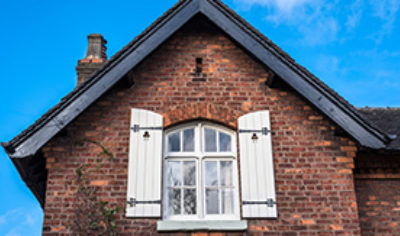The Cost of UK Home Insurance Policies
An important factor in determining insurance costs is the actual sums insured required. Whilst many insurance companies, are now opting for sum insured free policies, the majority of insurers will still require to know the actual rebuilding ( or reinstatement) cost. In respect of home insurance buildings cover, you should insure for the full rebuilding cost of your property. This is not the value of your home, which will of course include the land on which the property stands and a whole range of variables to which you cannot attach to a rebuilding cost. This market value, will include things such as the location, the view, the size and shape of the garden, the proximity to schools and shops and facilities, items to which it is simply not possible to attach a rebuilding cost. Insurance companies are not interested in these matters, they simply require to know a ” sum insured”, the total amount they will have to pay in the event of a total loss at the property. The rebuilding cost of your property relates to the full replacement of the structure, it’s permanent fixtures & fittings such as the bathroom, a fully fitted kitchen, & the central heating system. Remember to include garages, garden sheds, greenhouses, fences & gates.
It must also include amounts for demolition costs, site clearance, professional fees, such as those charged by architects & surveyors and local planners. To a home owner, this may seem a little complicated, especially as it is important to have the figure as accurate as possible. There are a number of ways of calculating rebuilding costs. Firstly, you can contact a local surveyor and ask them to visit the property and provide a valuation for insurance purposes. However, there is a cost involved with this and thus many people elect to calculate the sum insured themselves. A great tool to help you do this, can be located on the Association of British Insurers website. The information is provided by BCIS. BCIS is the principal source of residential rebuilding cost data in the UK. To use the calculator, you will need to provide a few basic details and be able to supply the dimensions of the property. However, it is important to follow the guidelines and pay attention to the types of property that the calculator cannot cater for.
If you have a mortgage on the property, things may be a little simpler, your lender will have carried out a survey prior to advancing a mortgage on the property. If you are able to locate a copy of this survey report, then it should state, the level of insurance you require. However, lenders are interested in protecting their loan and in some cases, surveyors attached to lenders have recommended amounts that are more closely related to the market value of the property. It is important to make sure that your sum insured is accurate, you can end up paying far too much for your home insurance if your building sum insured is correct. On the other hand, and perhaps a far worst scenario, having a sum insured that is too low, could end up with you be subject to having an ‘average’ clause applied to your insurance policy in the event of a claim. Average is the method by which insurance companies deal with under insurance on partial loss claims. In essence, they will reduce the cost of a claim under a policy in direct proportion with the amount of the under insurance. Here is an example:-
A home is insured for £200,000 and following a flood at the property, a claim is submitted which totals £30,000. The insurers appoint a loss adjuster and he calculates that the true rebuilding cost of the property is £400,000. In this instance the claim will be reduced to £15,000. For most people, in the event of this type of loss, having to fund a substantial amount of money would be unthinkable and could be financially crippling, hence the need to make sure that your building sums insured are as accurate and as up to date as possible. Most modern contents insurance policies whether part of a home combined cover or issued as a stand alone contract, will offer cover on a ‘New for Old’ basis.
The range of perils, will be almost identical to that offered by the building section of the policy, but the basis of settlement, will be New for Old. Originally, contents covers were contracts of indemnity, that is to say, in the event of a loss, you were ‘placed in the same position after the loss as you were in before it’. Thus, if you had a 10 year old sofa and it was damaged, you were provided with a payment based on this age. These contracts, led to a great deal of problems with claims settling and thus a style of cover, called new for old came about. Under this type of contract, in return for valuing your home contents as if you had just bought them all as brand new, in the event of a claim, the insurance company will repair or replace the goods with new items.
Most insurance companies now, prefer not to offer cash settlements in respect of claims. A network of agents and direct suppliers exists, meaning that insurers can obtain substantial discounts on such things as electrical items. When valuing your contents on a new for old basis, it is important to include every, item, this really does, mean everything, including all items of clothing. ( Although new for old cover is usually not offered on clothing). The third main section of a home insurance policy, that requires a sum insured calculation, is the All Risks section.. The title is slightly misleading as not all eventualities will be covered although a good deal are. This section is designed to cover items away from the home and you should calculate your sum insured on a replacement basis. Most insurers offer two options:-
- Unspecified All Risks, this covers smaller items and insurers will have a single article limit of anywhere between £750.00 and £1500.00 per item. Cover is arranged on a first loss basis, as you simply effect cover for the maximum amount of items you think you will have away from the home at any one time.
- Specified All Risks. This type of cover is slightly cheaper as you are declaring the items to be insured, to the insurance company. In some cases, proof of ownership or a valuation will be required. Most policies will come with certain restrictions and warranties with regard to the care and maintenance of valuables, these as with all terms & conditions, should be studied closely.
How Can Your Postcode Affect Your UK Home Insurance Policy? – home insurance UK is the most standard and easily available form of property insurance contract and although not compulsory by statue, anyone with a mortgage will almost certainly be required to insure the fabric of their home under a buildings insurance policy. To this, you can at your option, opt to include cover for contents which in turn can be extended to include All Risks ( this section of a home insurance UK policy is designed to cover valuable items away from the home. But how are insurance rates for home insurance calculated? When applying for you home insurance UK policy, there are a number of rating or underwriting factors that an insurer will take in to consideration before providing you with a quotation. There are quite a few variables and this makes almost every quotation different. One of the most important rating factors for home insurance is your postcode….
It is a pure hierarchical system, working from left to right with each postcode generally representing a street, part of a street, or a single premises. So this system that was originally introduced as a means of helping postmen locate homes, now plays a major parting in the rating of home Insurance. All insurance companies keep a database of statistical information relating to postcodes, from it they can discover various information that will all affect insurance pricing.
- Insurers can tell the type of soil that you property stands, on this helps them decide if you home is likely to be troubled by subsidence, for example if the postcode indicates that your home is built on clay soils, the insurance company may want an increased premium. They will also be able to tell if you home is situated above mine workings or tunnelling.
- Insurers can tell if you property is situated on a flood plain or close to any rivers or water courses. Insurers also make use of sophisticated mapping software and can often overlay maps to see the extent of any flood water and it’s proximity to your home. With the rent spate of bad weather claims, insurers are currently updated the postcode flood map and this data will help them decide of future home insurance premiums and may even decide if insurance is available or not.
- Insurers will have access to previous claims information for your postcode, this is now so fine tuned that sometimes insurance rates can vary from street to street. Insurers will be able to tell if they have experienced previous claims in your neighbourhood, in particular they will be looking out for Theft and malicious damage occurrences.
Although postcodes, go a long way to helping insurers decide on what premiums to charge, home insurance quotes are only arrived at after asking a set of questions. Each of these questions will have an effect on the premium you pay, even you age and occupation can influence the acceptance of a risk and it is thus vitally important that prior to buying your policy, you check that all answers supplied are accurate.
























